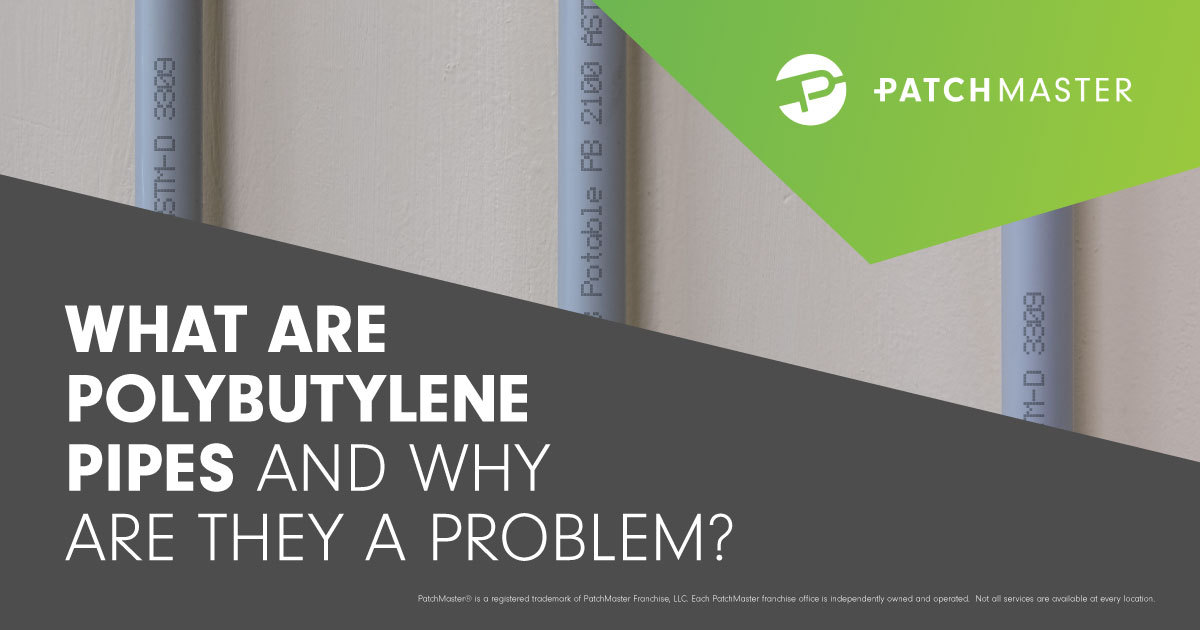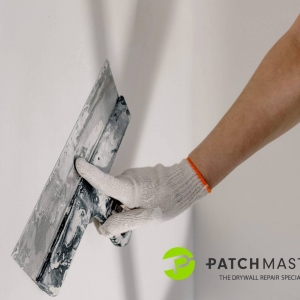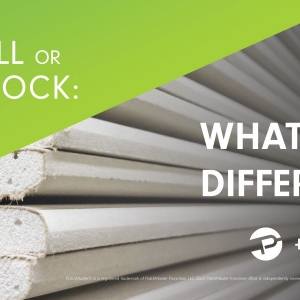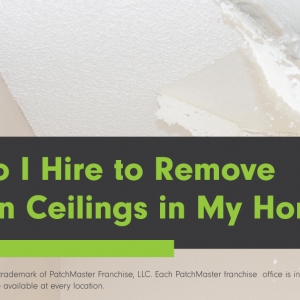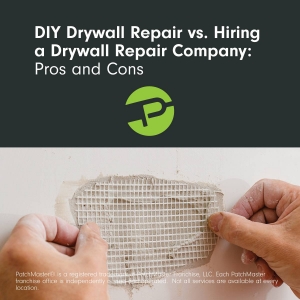Polybutylene (PB) pipes are pipes made from a plastic resin and were a cheap and easy solution to plumbing throughout the sunbelt building boom from 1975-1995. For reference, the sunbelt region consists of eighteen states in the Southeast and Southwest and includes seven of the ten largest U.S. cities.

In this article, we will cover:
- What is polybutylene piping?
- Why Are Polybutylene Pipes a Problem?
- How to identify polybutylene plumbing in your home
- Who Can Assist Me with Polybutylene Pipe Removal
- Repairing Drywall After Polybutylene Pipe Removal
What is Polybutylene Piping?
Polybutylene, or PB-1, is a type of plastic resin that was used extensively in the late 1970s to mid-1990s to make water supply pipes. It is also commonly called “PB” or by the brand name “Quest” or “Qest.” Manufactured for water supply in residential homes beginning in 1978, polybutylene pipe was installed in millions of homes in the 80's and 90's. In fact, it is estimated that about seven to ten million homes in the sunbelt region of the United States had polybutylene pipe installed during this time.
Initially, polybutylene pipe was used throughout homes for branch piping and main water lines. Home builders often found them to be an attractive option because they were cheaper than other plumbing materials (such as copper) and polybutylene pipe was marketed as an easy-to-install home plumbing system that would last longer than other piping materials. They were also resistant to freezing, which made them a popular choice in the Mid-Atlantic region.
Unfortunately, as we will discuss, over time, polybutylene pipe became a disastrous and costly mistake for many homeowners throughout the United States.
Why Are Polybutylene Pipes A Problem
As noted, polybutylene pipe is known for micro-fracturing, pipe splitting, and related home damage (and settled class-action lawsuits). In fact, a class-action lawsuit was filed in Tennessee, in 1995, over faulty polybutylene plastic piping. Cox vs. Shell Oil Co. The lawsuit, Cox vs. Shell Oil Co., was won and settled for $950 million, allowing impacted homeowners the chance to get their pipes replaced for free.
In addition, the plastic used in these pipes reacts to oxidants and disinfectants in public water supplies, like chlorine. The result is scaling and flaking from within that creates microfractures in the pipes which eventually burst. It is recommended that if a home has polybutylene pipes, the entire plumbing system should be replaced immediately, as a costly leak can happen at any time, without warning, and cause large-scale damage.
How to Identify Polybutylene Plumbing in Your Home
Typically, polybutylene pipe is grayish-blue in appearance, but it can also come in silver, cream, or black. Depending on where you live in the country, polybutylene pipe is generally the same color in your region. Polybutylene can be identified by the PB2110 mark stamped somewhere on the pipe - this is a surefire way to identify polybutylene pipe.
Who Can Assist Me with Polybutylene Re-Piping
Polybutylene re-piping should be done by a licensed re-piping company that employs re-piping specialists; these are not typical plumbers. They have specialized training and often charge on a “per-fixture” basis. However, there are other factors such as if they will be repairing drywall holes.
Replacing polybutylene pipe plumbing generally costs between $2,500 and $20,000 to replace polybutylene plumbing, depending on the number of fixtures, the size of your home, and whether drywall damage needs to be repaired.
Also, the cost to replace polybutylene pipe can be much cheaper if your home has a crawlspace, due to the ability to easily access the majority of the piping. One point to note, if you choose to replace the piping with copper, the cost will also be significantly higher. Polybutylene pipe is usually replaced with PEX piping or CPVC piping.
Repairing Drywall After Polybutylene Pipe Re-Piping
Replacing polybutylene plumbing often creates small rectangular holes in the drywall where the re-piping has taken place. Once the re-piping specialist completes their job, you will need a drywall repair specialist to fix the holes in your wall.
That’s where PatchMaster comes in. As your local drywall repair company, we have extensive knowledge and the skills to repair holes left by re-piping specialists.
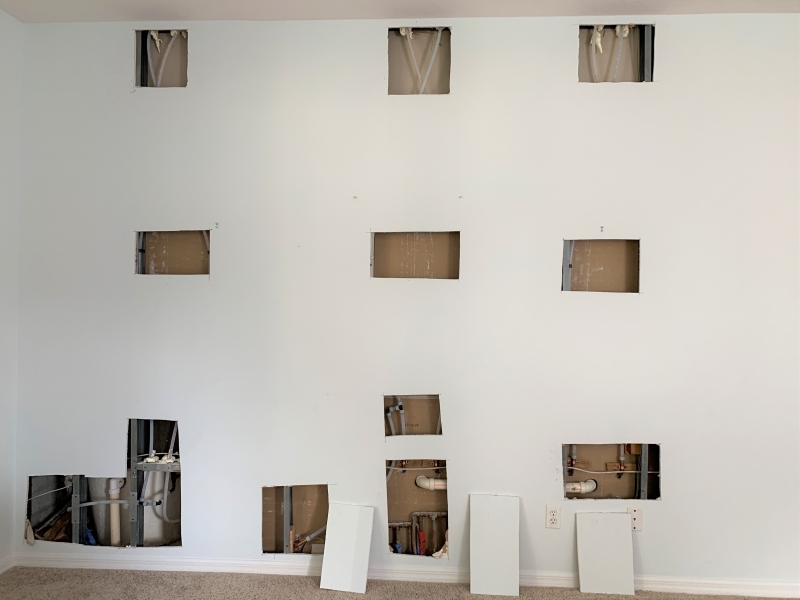
PatchMaster’s process begins with our drywall technicians covering the floors, furniture, appliances and any other items that are in the vicinity of the repair, with plastic sheeting. This even includes the areas where our technicians need to walk. From there, they will work quickly and efficiently to patch the holes in your drywall and make your home whole again.
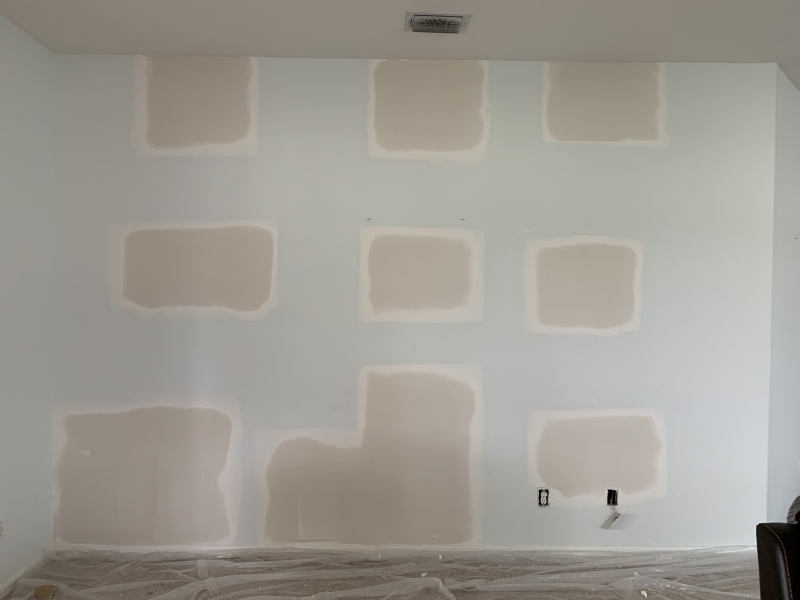
Finally, our technicians are skilled at paint matching and can paint the repair area or we can paint a full wall, corner to corner. Either way the goal is the same - to make your walls or ceilings look new again!
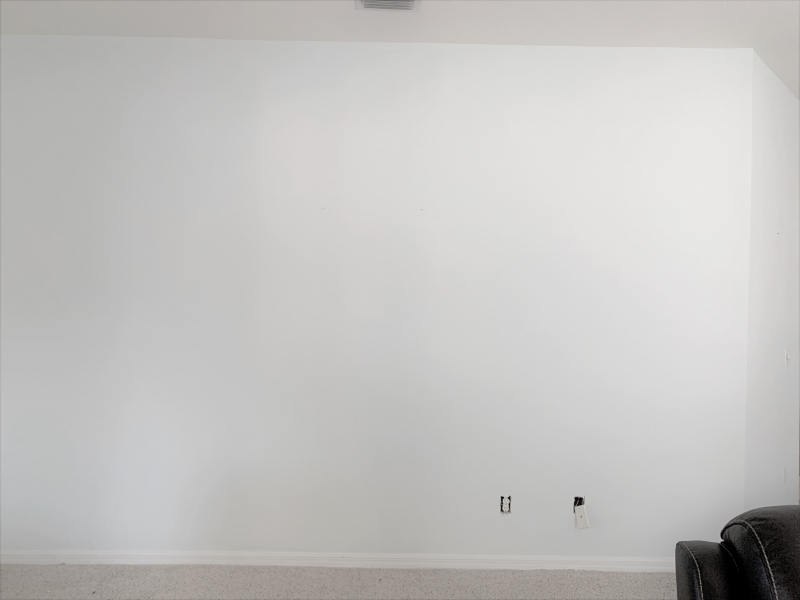
Contact Your Local Drywall Repair Specialist
If you have drywall holes as the result of polybutylene re-piping, contact your local PatchMaster
To schedule a free estimate for drywall and sheetrock repair and painting services. We also offer professional popcorn ceiling removal, texture matching services, or small ding and dent repair. Call us today at 1-844-PATCH-MAN (US) or 1-833-WE-PATCH (Canada) to experience a professional drywall repair experience like no other, with PatchMaster.
Drywall repair photos via ourcambridgeparkfamily.com, repair work was performed by PatchMaster Serving the Treasure Coast
